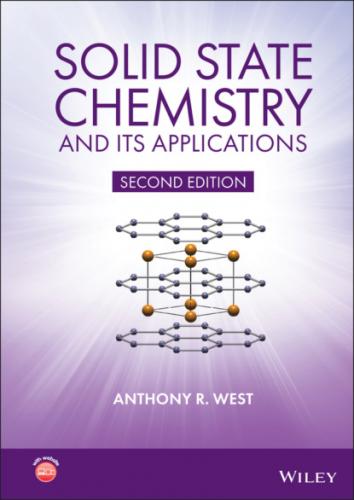It is common practice to regard silicate structures as composed of cations and silicate anions. Various silicate anions are possible, ranging from the extremes of isolated
1 Almost all silicate structures are built of SiO4 tetrahedra.
2 The tetrahedra may link by sharing corners to form larger polymeric units.
3 No more than two SiO4 tetrahedra may share a common corner (i.e. oxygen).
4 SiO4 tetrahedra never share edges or faces with each other.
Exceptions to (1) are structures in which Si is octahedrally coordinated to O as in one polymorph of SiP2O7 and in high‐pressure polymorphs of SiO2 (coesite, stishovite). The number of these exceptions is very small, however, and we can regard SiO4 tetrahedra as the normal building block in silicate structures. Guidelines (3) and (4) are concerned, respectively, with maintaining local electroneutrality and with ensuring that highly charged cations, such as Si4+, are not too close together.
The important factor in relating the formula to structure type is the Si:O ratio. This ratio is variable since two types of O may be distinguished in the silicate anions: bridging oxygens and non‐bridging oxygens. Bridging oxygens are those that link two tetrahedra, Fig. 1.52. Effectively, they belong half to one Si and half to another Si. In evaluating the net Si:O ratio, bridging oxygens count as
The overall Si:O ratio in a silicate structure depends on the relative number of bridging and non‐bridging oxygens. Some examples are given in Table 1.27; they are all straightforward and one may deduce the type of silicate anion directly from the chemical formula.
Many more complex examples could be given. In these, although the detailed structure cannot be deduced from the formula, one can at least get an approximate idea of the type of silicate anion. For example, in Na2Si3O7, the Si:O ratio is 1:2.33. This corresponds to a structure in which, on average, two‐thirds of an O per SiO4 is non‐bridging. Clearly, therefore, some SiO4 tetrahedra must be composed entirely of bridging oxygens whereas others contain one non‐bridging oxygen. The structure of the silicate anion would therefore be expected to be something between an infinite sheet and a 3D framework. In fact, it is an infinite, double‐sheet silicate anion in which two‐thirds of the silicate tetrahedra have one non‐bridging O.
The relation between formula and anion structure is more complex when Al is present. In some cases, Al substitutes for Si, in the tetrahedra; in others, it occupies octahedral sites. In the plagioclase feldspars typified by albite, NaAlSi3O8, and anorthite, CaAl2Si2O8, Al partly replaces Si in the silicate anion. It is therefore appropriate to consider the overall ratio (Si + Al):O. In both cases, this ratio is 1:2 and, therefore, a 3D framework structure is expected, as in SiO2 itself, Fig 1.52(c). Framework structures also occur in orthoclase, KAlSi3O8, kalsilite, KAlSiO4, eucryptite, LiAlSiO4, and spodumene, LiAlSi2O6.
Figure 1.52 Silicate anions with (a) bridging and (b) non‐bridging oxygens. (c) The quartz structure formed by a 3D network of corner‐sharing silicate tetrahedra, within which, 6‐membered rings can be identified. These rings enclose cavities that can accommodate interstitial cations such as Li+, Section 2.3.3.1. (d, e, f) Building blocks, schematically, of clay mineral structures.
Adapted from W. M. Carty, Bull. Amer. Ceram. Soc. 72 (1999).
Table 1.27 Relation between chemical formula and silicate anion structure
| Number of oxygens per Si | ||||
|---|---|---|---|---|
| Si:O ratio | Bridging | Non‐bridging | Type of silicate anion | Examples |
| 1:4 | 0 | 4 |
Isolated |
Mg2SiO4 olivine, Li4SiO4 |
| 1:3.5 | 1 | 3 |
Dimer |
Ca3Si2O7 rankinite, Sc2Si2O7 thortveite |
| 1:3 | 2 | 2 |
Chains |
Na2SiO3, MgSiO3 pyroxene |
|
Rings, e.g. |
CaSiO3 a, BaTiSi3O9 benitoite | |||
|
|
Be3Al2Si6O18 beryl | |||
| 1:2.5 | 3 | 1 |
Sheets |
